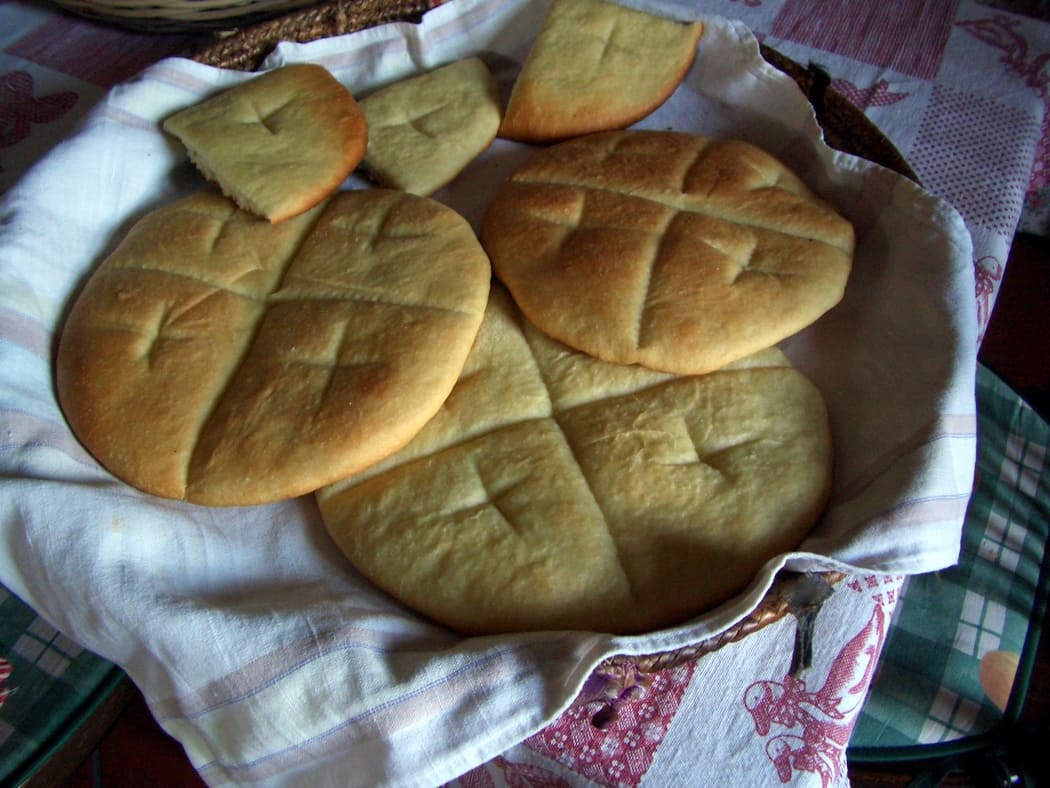The Gift Of Bread On December 31st 0 Commentaires

"A Medas Annos" is what you wish in Sardinia on December, and this is the wish of the Gabbiano Azzurro Hotel & Suites to all of you loyal readers of the Blog: "A Medas Annos", “wishing you many years to come”.
The Gift of Bread is an ancient tradition that still resists. In Benetutti they call it “Su candelarzu”, in other places “sa candelarìa” or “candelarju”. It is a tradition in Sardinia repeated every December 31st. It is part of the practices of the winter solstice and nowadays it survives in very few regions. Contrary to the assonance with candles, the name of this tradition perhaps derives from the "Roman Kalendae".
From early morning, children up to the age of ten knock at the doors of houses all over the town with a pillowcase acting as a sack over their shoulders. During the morning that sack will be filled with sweets, dried fruit, chocolates, and why not, even some coins. Inside each house people wait for the ringing of the bell and the voices of the children saying: «A su candelarzu». There are special nursery rhymes to recite during the begging, and once they have received the offer, they pronounce the phrase "a medas annos", a wish for prosperity for the coming years. But if by chance the request is denied, the children respond with a sort of "frastimu", a bad omen: “A nolla dazes sa candelarzu? Cras a manzànu in terra nighedda!" Ah, won't you give us the candelarzu? Tomorrow morning in black earth, (that is, at the cemetery).
In Sardinia there is the custom of frastimare, (to curse) the outcome of an ancient culture with the intention of giving words the curse power: "lampu ti calidi": let the lightning strike you - "Is manus cancaradas": hope your hands get blocked - "chi Deus tindi pighiri": May God take you away - "Stizza t'abruscidi": may justice burn you. Really terrible, right? It's always better to keep them friends and never argue with them!
This habit is widespread also in other towns of the island such as Orgosolo. where they call it “sa candelarìa”. In the past, among the gifts there were, "sas rughittas", small rolls shaped as a cross and "s'accheddu", small bread sticks with a spiral tip and the bread of "su capidu e s'annu ", oval shaped with "sas ficcas" for good luck, twelve holes and as many rings, representing the months of the coming year. Nowadays only "sas rughittas" resist, prepared by older people knowing the tradition.
In Oristano also the event is called "sa candelarìa" and the bread offered is called cocòne, prepared with durum wheat flour mixed with yeast, warm water, salt and lard. The dough is divided into pieces of the size of an orange, which are left to rise; then they are smoothed out with a rolling pin to obtain "sa tundìna", about 35 cm in diameter, which, once cooked in the oven, is divided into four and each slice is the cocòne, to be given to children when they will come to ask for it in the morning.
But the party is not over, in fact in the evening there are "serenades” where groups of young people sing a good luck rhyme in front of the homes of those who got married in this ending year, followed by a cumbidu, an invitation, with wine and sweets, celebrating and singing until dawn. Unmarried girls on the last night of the year are writing their name and the one of the loved one, on leaves joined to “Y” and then putting them between the embers of the fireplace, waiting for the leaves to intertwine to show a good omen of their love story.
"The dawn of 31 December of the year that disappeared was greeted with joy by the children of the village. It carried the day of su candelarzu... The housewives were attentive at the door to please the lively boys, with abundant handfuls of almonds, walnuts, walnuts, chestnuts, and raisins " (Pietro Meloni Satta)
--
Written by Daniela Toti
Photo by Angelo Meridda
Share your opinion with us!